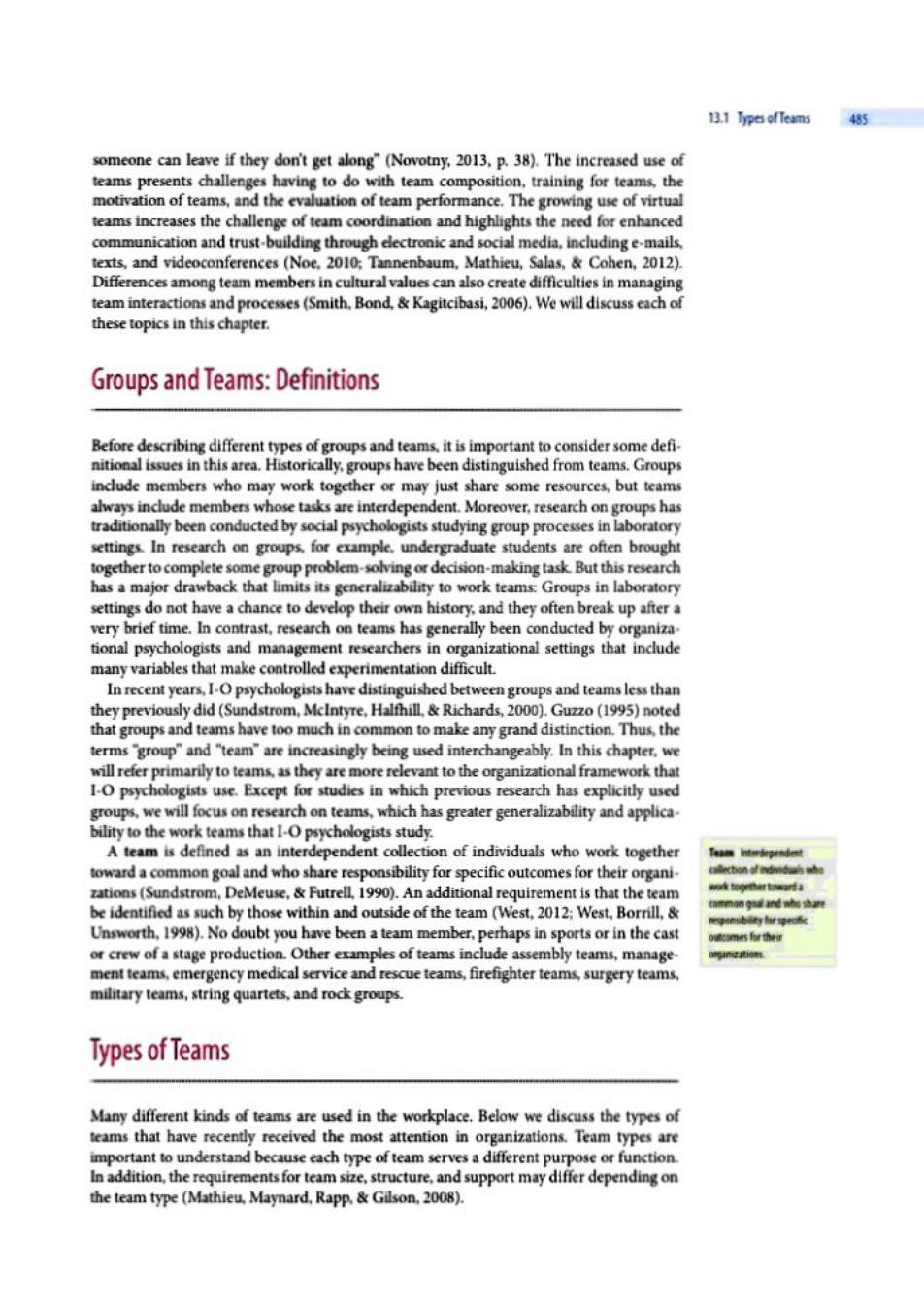正在加载图片...

13.1 Types ofTeams 485 someone can leave if they don't get along"(Novotny,2013,p.38).The increased use of teams presents challenges having to do with team composition,training for teams,the motivation of teams,and the evaluation of team performance.The growing use of virtual teams increases the challenge of team coordination and highlights the need for enhanced communication and trust-building through electronic and social media,including e-mails. texts,and videoconferences (Noe,2010:Tannenbaum,Mathieu,Salas,Cohen,2012). Differences among team members in cultural values can also create difficulties in managing team interactions and processes(Smith.Bond,Kagitcibasi,2006).We will discuss each of these topics in this chapter. Groups and Teams:Definitions Before describing different types of groups and teams,it is important to consider some defi- nitional issues in this area.Historically,groups have been distinguished from teams.Groups include members who may work together or may just share some resources,but teams always include members whose tasks are interdependent.Moreover,research on groups has traditionally been conducted by social psychologists studying group processes in laboratory settings.In research on groups,for example,undergraduate students are often brought together to complete some group problem-solving or decision-making task But this research has a major drawback that limits its generalizability to work teams:Groups in laboratory settings do not have a chance to develop their own history.and they often break up after a very brief time.In contrast,research on teams has generally been conducted by organiza. tional psychologists and management researchers in organizational settings that include many variables that make controlled experimentation difficult. In recent years,I-O psychologists have distinguished between groups and teams less than they previously did(Sundstrom,Mclntyre.Halfhill,&Richards,2000).Guzzo(1995)noted that groups and teams have too much in common to make any grand distinction.Thus,the terms group"and "team"are increasingly being used interchangeably.In this chapter,we will refer primarily to teams,as they are more relevant to the organizational framework that 1-0 psychologists use.Except for studies in which previous research has explicitly used groups,we will focus on research on teams,which has greater generalizability and applica- bility to the work teams that I-O psychologists study. A team is defined as an interdependent collection of individuals who work together toward a common goal and who share responsibility for specific outcomes for their organi. zations (Sundstrom,DeMeuse,Futrell,1990).An additional requirement is that the team be identified as such by those within and outside of the team (West,2012:West,Borrill, mon and whe sha Unsworth,1998).No doubt you have been a team member,perhaps in sports or in the cast or crew of a stage production.Other examples of teams include assembly teams,manage. ment teams,emergency medical service and rescue teams,firefighter teams,surgery teams, military teams,string quartets,and rock groups. Types of Teams Many different kinds of teams are used in the workplace.Below we discuss the types of teams that have recently received the most attention in organizations.Team types are important to understand because each type of team serves a different purpose or function. In addition,the requirements for team size,structure,and support may differ depending on the team type (Mathieu,Maynard,Rapp,Gilson.2008)